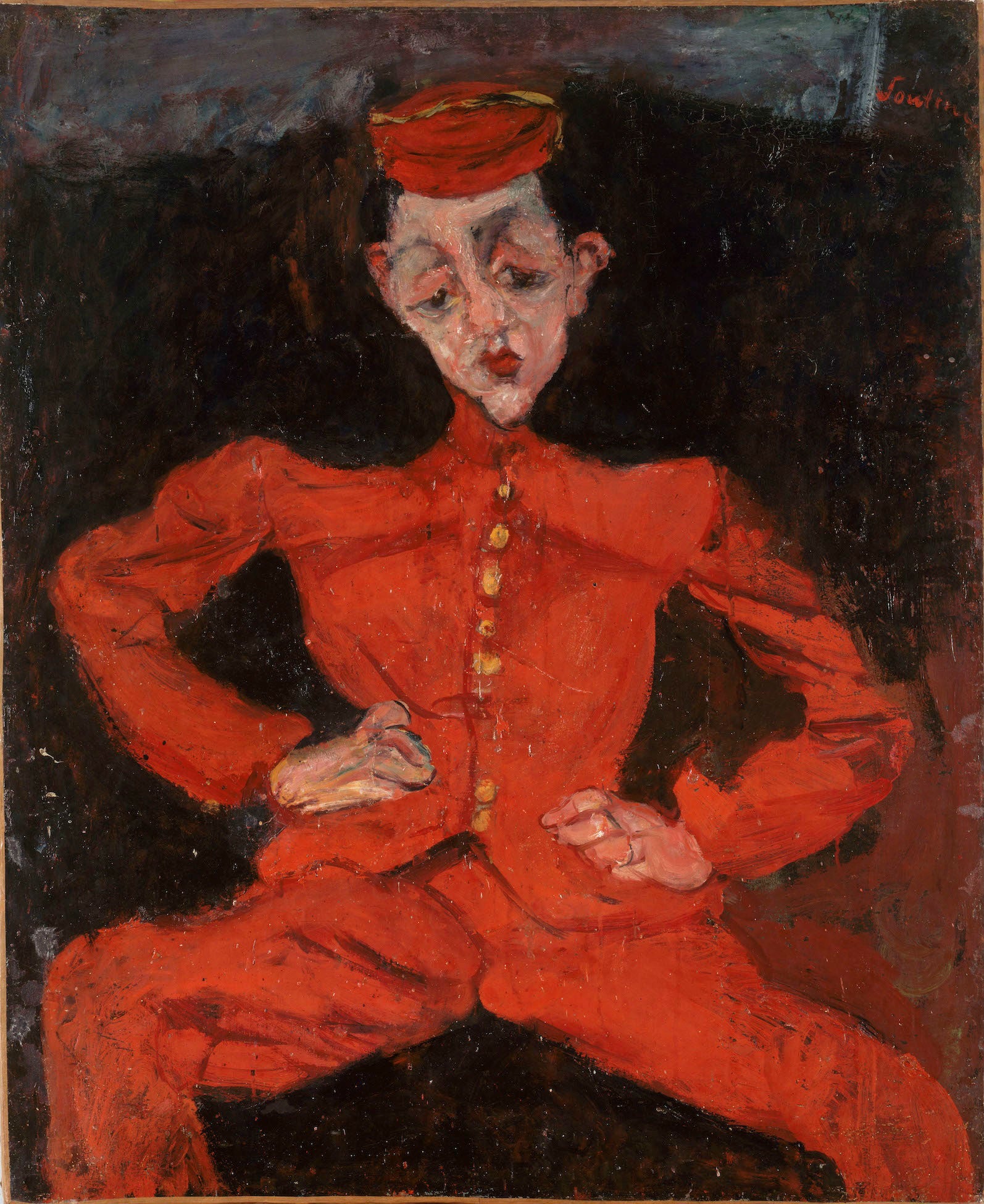Soutine's Portraits: Cooks, Waiters and Bellboys, The Courtauld Gallery, London, review: He characterises his sitters wonderfully
Soutine was fascinated by cooks and waiting staff in bold uniforms who sat for him in Paris and the south of France

Your support helps us to tell the story
From reproductive rights to climate change to Big Tech, The Independent is on the ground when the story is developing. Whether it's investigating the financials of Elon Musk's pro-Trump PAC or producing our latest documentary, 'The A Word', which shines a light on the American women fighting for reproductive rights, we know how important it is to parse out the facts from the messaging.
At such a critical moment in US history, we need reporters on the ground. Your donation allows us to keep sending journalists to speak to both sides of the story.
The Independent is trusted by Americans across the entire political spectrum. And unlike many other quality news outlets, we choose not to lock Americans out of our reporting and analysis with paywalls. We believe quality journalism should be available to everyone, paid for by those who can afford it.
Your support makes all the difference.
This exhibition of 20 portraits of modest-to-middling size, spread across just two galleries on the top floor of the Courtauld, offers up an entire fusty, under-stairs world in miniature, you could say. You feel you are viewing it by torchlight. Who are these creatures assembled here to serve us?
Chaim Soutine, a young painter of Jewish descent from Smilovichi (then in the Soviet empire, now in Belarus), arrived in Paris 1913 at the age of 20. His subjects belong to a neglected class: the labourers in the downstairs world of the great hotels and restaurants – the valet, the chambermaid, the pastry cook. Sometimes he will travel elsewhere, but it is the same species that enthrals him when he gets there. There is always flour underneath the finger nails.

Soutine is a savagely attentive painter. He views his subjects head on. There is space for little other than their bodies in these frames – perhaps there is occasionally a chair or a blood-soaked curtain borrowed from a butcher’s shop. Most often the bodies are surrounded by a raggedy storm of dark brush strokes. Soutine’s world was vertiginous in all its aspects. When he painted buildings, it looked as if they were doing sideways lurches, collapsing in on themselves.
It’s somewhat true of the portraits too. These human beings look like no other painter’s inventions. They are oddly awkward and even a little puppet-like in their poses – splayed legs, sharp, jutty elbows, carrot-shaped heads (with flappy elephantine ears) which diminish to a fearful taper and a knobby chin. This is the opposite of grand portraiture – of which Soutine, incidentally, knew a great deal. He was a keen visitor to the Louvre.

There is no flattery here, no posturing, no studied order, no finely conceived harmoniousness. These faces look fluid, as if they might just have been modelled in plasticine, pulled and pushed into shape. They are bendy-looking, lumpy, as much vegetable as human. Cheeks are sucked in. Faces slump as if gloomily dropsical. These creatures, in all their strange fragility, as they loom out of the dark of their unfathomable underworld, look tremulous, as if we are seeing them through water.
But these underlings do often glitter in their costumes too – the red, eye-delighting waistcoat of the maitre d’, for example which, once again, is painted with a studied stiffness of shape, as if it might just have been rough-cut out of cardboard.
Soutine characterises his sitters wonderfully. They are, by turns, aggressive, surely, modest, hand-wringingly humble or, occasionally, curiously demonstrative. The young looks older than their years. A chambermaid, painted in 1930, looks creepily – and creepingly – docile, beaten down, and she is presented in an over-tall frame which seems to pinch her in, limit her humanity, reduce her in status. The most famous painting here is of a bellboy, with outrageously splayed legs. It looks and feels tragi-comic in its blaring self-presentation.
Soutine’s is a good luck story. His talents were recognised. He became rich. Albert Barnes, creator of the Barnes Foundation of Philadelphia, saw his paintings and bought fifty of them. Just like that. Barnes had made Renoir rich too some decades before by buying vast quantities of his paintings. Americans can do good things too from time to time.
‘Soutine’s Portraits: Cooks, Waiters and Bellboys’, The Courtauld Gallery, London, 19 October to 21 January (courtauld.ac.uk)
Join our commenting forum
Join thought-provoking conversations, follow other Independent readers and see their replies
Comments